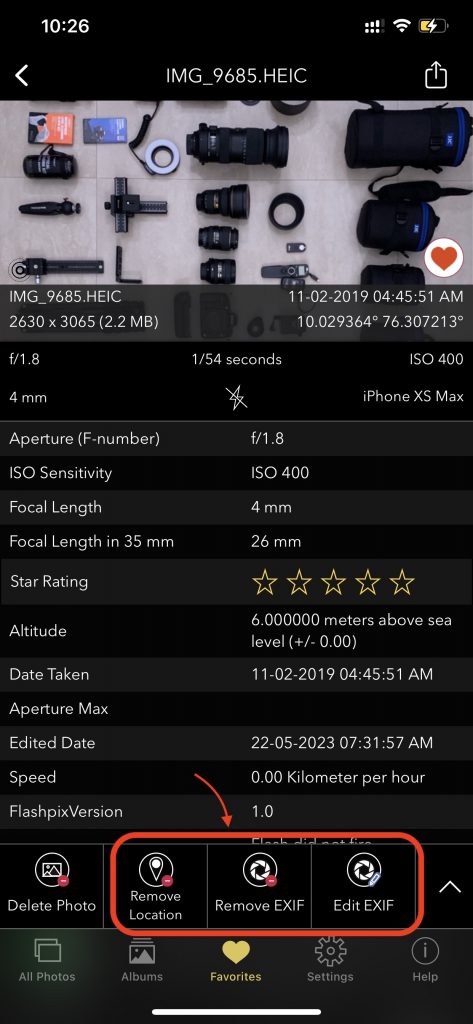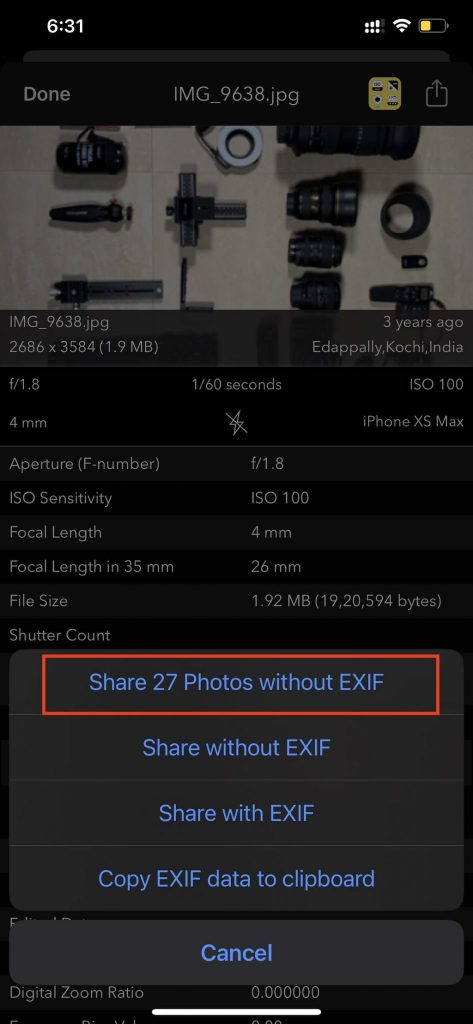In the age of digital photography, the metadata embedded in your photos can reveal a wealth of information about when and where the picture was taken, the camera used, and even your personal identity. This metadata, known as EXIF (Exchangeable Image File Format) data, serves various purposes, but there are times when you might want to edit it. In this blog post, we will discuss the reasons for and methods of editing EXIF metadata, including privacy concerns and corrections.
What is EXIF Metadata?
EXIF metadata is a set of information embedded within a digital photo file. It includes details such as:
- Date and Time: The exact date and time when the photo was taken.
- Camera Information: The make and model of the camera, lens, and other technical details.
- Geolocation: The GPS coordinates of where the photo was taken.
- Exposure Settings: Shutter speed, aperture, ISO, and more.
- Copyright Information: Copyright owner and usage rights.
Reasons to Edit EXIF Metadata
1. Privacy Concerns
One of the primary reasons for editing EXIF metadata is to protect your privacy. Sharing photos online can inadvertently reveal your location and even the type of camera you use. This information may be exploited by malicious actors for nefarious purposes.
By editing or removing EXIF data, you can maintain a higher level of privacy.


Screenshot of EXIF Viewer by Fluntro App
Sometimes, the information in the EXIF metadata might be inaccurate. For example, if you forgot to set the correct date and time on your camera, your photos could have the wrong timestamps. Editing EXIF metadata allows you to correct these errors and maintain accurate records.
3. Professional Use
Professional photographers often edit EXIF metadata to add copyright information, descriptions, and keywords to their images. This helps protect their intellectual property and makes it easier for potential clients to find their work.
Methods to Edit EXIF Metadata
Now that we understand the reasons to edit EXIF metadata, let’s explore how to do it. There are several methods, ranging from simple to more advanced:
1. Using Photo Editing Software
Most photo editing software, such as, Adobe Photoshop, Lightroom, and GIMP, offer the option to edit EXIF metadata. Simply open the image, go to the metadata or properties section, and make your changes. You can update the date and time, add copyright information, and more.
2. Online EXIF Editors
Several online tools and websites specialize in editing EXIF metadata. They provide user-friendly interfaces that allow you to upload an image and make changes to the metadata fields. Be cautious when using online tools, as they may have privacy and security concerns.
Mobile Apps
Many mobile apps for photo editing also provide the option to edit EXIF data. This can be convenient if you want to make quick edits on your smartphone before sharing photos on social media.
For iOS user we suggest Exif Viewer by Fluntro.
Highly Recommend to try out Lite (Free Trial version) first
Appstore link of Free Lite version :- https://apps.apple.com/us/app/exif-viewer-lite-by-fluntro/id979066584
Appstore link of Paid Full version :- https://apps.apple.com/us/app/exif-viewer-by-fluntro/id944118456

4. Command-Line Tools
For advanced users and those comfortable with command-line interfaces, there are command-line tools like ExifTool that offer powerful options for editing EXIF metadata in bulk. This is particularly useful for photographers with extensive photo libraries.
Best Practices for Editing EXIF Metadata
When editing EXIF metadata, it’s essential to follow some best practices:
- Make Backup Copies: Before making any changes, create backup copies of your original photos to avoid irreversible data loss.
- Be Transparent: If you’re sharing photos with edited EXIF data, it’s ethical to disclose any modifications made.
- Preserve Integrity: When correcting errors or adding information, ensure that the changes accurately represent the original photo’s context.
- Respect Copyright: If you’re editing EXIF data for professional purposes, ensure that you include copyright and licensing information as needed.
Editing EXIF metadata can serve various purposes, from safeguarding your privacy to maintaining accurate records and protecting your creative work. However, it’s essential to approach this task with care, always respecting the integrity of the original photo and adhering to ethical and legal standards. Whether you’re a casual photographer or a professional, knowing how to edit EXIF metadata is a valuable skill in the digital age.